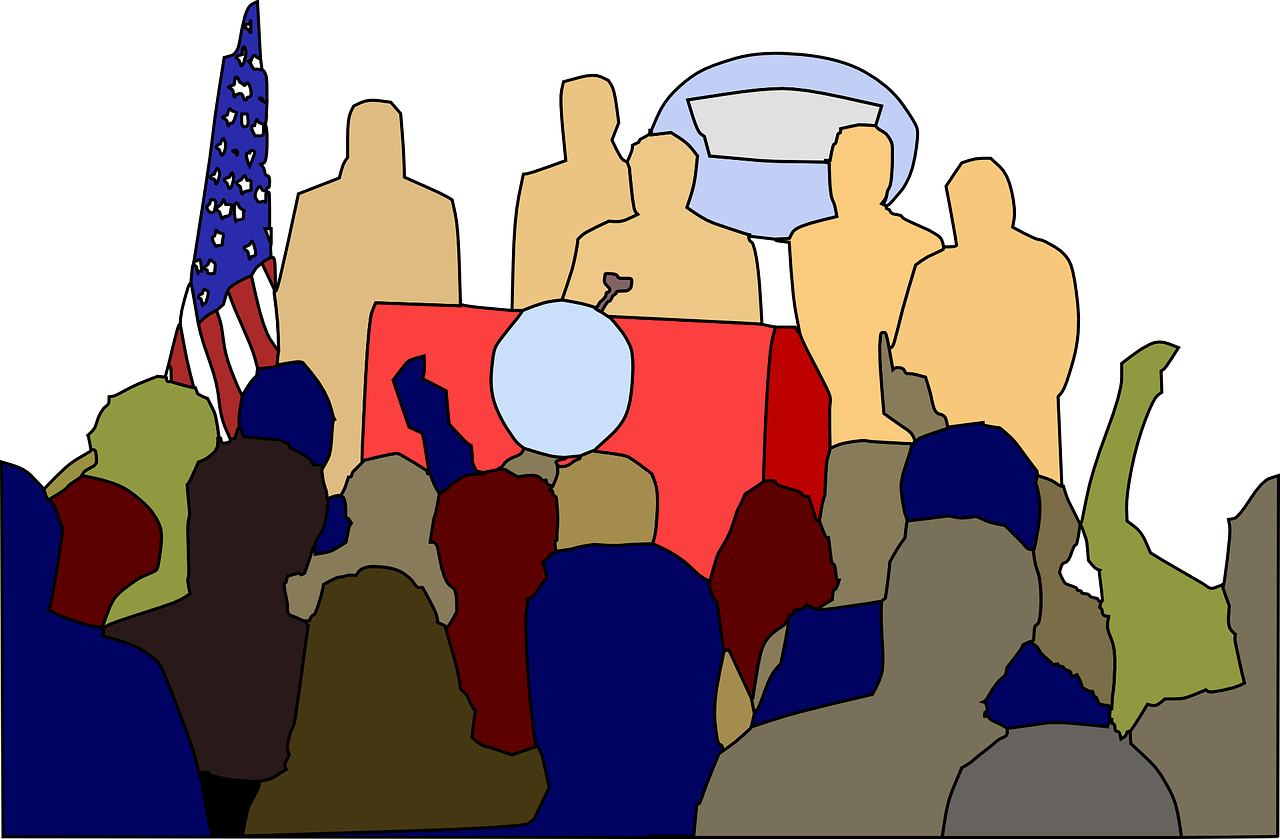This is part one of a multipart series on the current political landscape.
You just had a terrible day. Your idiotic boss continues to harass you about their failures in your job that you hate. There were things you once enjoyed about it, but they have been ground to dust. You vent to a friend. “Just quit.” “Look on the bright side.” “Have you tried…” Emotional frustration wells. You’ve already tried _so_ _many_ _things and they _do_ _not_ _work_! Now you feel worse, like somehow not only is the situation shitty, but it’s also your fault that it is. Anger, frustration, sadness, fear; emotions whirl and you snap at whomever you were talking with. Now you’re mad at your boss and your jerk friend.
That jerk friend is the Democratic party. Intellectually you understand that they mean well, but they continually let you down. They parrot the same platitudes on repeat, encourage you to empathize with your abusers, and keep making it your responsibility. And, most frustrating of all, nothing seems to change. It’s exhausting.
So, let’s take a big step back and see how we got here.
The Policy Advantage
Theoretically, politics in a democracy is a discourse in how to accomplish goals. Each side comes to the table, lays out what they are going to do, then the public look at the evidence and vote on which way they want the world to progress. Let’s pretend we are in this theoretical world. What policies, devoid of political label would people want? Which ones focus on the most important issues to voters? Fortunately, many others have studied/polled this in detail and everything I have found shows Democrats ‘win’ handily. Lelkes study attempting to understand ‘why’ succinctly puts it “For a half-century or more, the positions of the Democratic Party on the dominant electoral agenda in American politics have been far more popular than those of the Republican Party”.
Similarly, CNN’s rollup of a variety Gallop polling, “the polling shows the majority of the public usually backs policy positions preferred by the Democratic Party.” More directly from Gallop/Pews Research: People overwhelmingly want stronger gun control laws, environmental protections, higher taxes on the wealthy/corporations, abortions protected, fed government ensures healthcare, paths towards citizenship for immigrants. These handpicked examples are so typical of data related to policy popularity that there aren’t any clear counter examples (crime is a mixed bag1). To be clear, many people do like Republican policies, often times a majority of Republicans, but if you remove the party label and voted purely on policy around 60% (pessimistically) of the US population would vote Democrat. This is based on the policies enacted while in charge and promised while campaigning.
60/40 doesn’t feel as extreme as it should, mostly because our intuitions around percentages comes from probability rather then polling. If there is a 40% chance of raining, then one would prepare for rain since it often will. This is very different for polling. A 60/40 preference would, with normal polling errors, always end up on the 60 side. As a visual indication of how skewed the election should be, this 270 To Win map shows the 1972 Nixon’s second term election results. This is the most recent presidential election with a 60% (61.7% to be precise) popularity. This is definitely not the reversed color view of what happened in 2024.

The Outcome Advantage
Americans’ confidence in their party is not tied to policy agenda. The Republican party is more popular then their policies. The Democratic party is less popular then their policies. There are certain areas that each party has an ‘edge’ in regardless of policy. These areas have been fairly consistent for the last 40 years. This YouGov survey “explores which of the two major political parties does a better job handling key issues.” They found that Republicans led in the economy, immigration and crime whereas Democrats led on LGBTQ issues, abortion, health care, and the environment. Policy alone doesn’t explain this. Democratic policies are more popular even in the areas that Republican’s have an ‘edge’ in. Democratic economic policies are especially popular compared to Republicans.
On specific key issues, Americans dislike Republican actions compared to Democrats, but believe Republicans, as whole, are more competent. Perhaps, this is a case of ‘the whole is greater then the sum of the parts’. If, historically, Republican’s have done a better job then one could have confidence in their future performance, even while broadly disagreeing on the policy. So have the Republican’s done a better job? Now, correlation certainly doesn’t prove causality, but this is examining why people ‘believe’ one party is superior. If things get better when one party is in office then we could expect that party to get the ‘credit’ for it regardless of if they should. So how have the economy, immigration and crime done with Republican vs Democratic presidents?
Economy
From the American Economics Association review “The US economy has performed better when the president of the United States is a Democrat rather than a Republican, almost regardless of how one measures performance”. Every source agrees, Democratic policies are better for the economy and the majority of individuals in said economy. This effect is most dramatic when looking at the shift from one party to the next. Economic growth is positively correlated: it is more likely to continue in a similar fashion year after year. Republican’s have inherited better initial conditions which should give them an advantage, however “growth slows sharply and quickly when a Republican is elected, but accelerates on a dime following the election of a Democrat.” Republican’s take thriving economies and transition them towards recessions whereas Democrats do the opposite.
The only cherry-pickable negative trend is inflation. The trend is: inflation rises when Democrats are in office and fall while Republicans are. Holistically, wage and employment improvements still outpace aforementioned inflation, but focusing purely on inflation rising can paint a negative picture2. During this election cycle, inflation was definitely on peoples minds, but the Google Trend doesn’t show it being relevant in previous election cycles.
The data shows there should be a strong public perception towards Democrats being better for the economy. It’s much easier to prove correlation, but given how the economic data dramatically and consistently shifts from equilibrium during the first year of an administration, causality is probable.
Crime
Data in this area is a lot murkier then the economy. Opinions on the causes of crime are everywhere with strong claims backed up by questionable data. On top of that, a generational crime wave overwhelms smaller variations. This wave started steeply in the 60s, stabilized in the 80s, then fell dramatically in the 90s. This all combines to make correlation comparisons tricky, but there have been some. This longitudinal Science Direct study that directly compared violent death rate when the president was Republican vs Democrat. The conclusion, “Suicide, homicide, and combined suicide/homicide rates from 1900 to 2010 were found to be associated with an increase under Republican presidents and a decrease under Democratic ones.” The findings were substantial: rates halved with Democratic leadership and then doubled with Republican. This was in line with a previous study on Australia and UK where conservative leadership lead to substantially higher violent deaths. Even accounting for recency bias, the current Covid crime wave spike happened in 2020 under Republican leadership.
Correlation is definitely not causation, but if crime rates were used to justify which political party was better at ‘handling crime’ Democrats would win again. The crime data is definitely not as decisive as the economics data is. While one could reasonably claim it wasn’t Democratic policies causing the decline, there is no credible argument for it being improved with Republicans in charge. Crime, just like the economy, is worse with Republicans in charge. This makes logical sense as poverty strongly drives crime.
Immigration
Unlike the others, there isn’t a clear ‘good’ stat to look at for immigration. The most relevant piece I could find was from this Pew Research Study examining the concerns of immigrations from the Mexican border. Both parties were concerned about economic impact, but Republican’s were also concerned about crime whereas Democrats were mostly concerned about immigrants safety. This aligns with the various immigration talking points. In general, immigration discourse appears to be mostly a stand in for economic and crime fears. Immigration works particularly well in this area since it is so abstract. Politicians can weave whatever narrative they desire about immigration without saying anything falsifiable. And, somewhat expectedly, the issues immigration highlights are the same ones that have a Republican bias despite the Democratic superiority. This is just carrying forward the same bias (or, perhaps, vice versa).
Conclusion
The Republican party has a popularity edge in certain important areas despite enacting policies people disagree with and having worse measurable historical outcomes. This is without looking at any of the areas Democrats have a policy, popularity, and outcome superiority. This paints a very bizarre picture of the success of the Republican party. How are Republican’s competitive when they aren’t even good at what they claim to be good at?
Find out in part two of this multipart series (coming soon).
- Complications in the data makes it not clear which policy overall is more popular. For example, people believe that strengthening social programs is substantially more important then strengthening law enforcement (D wins 64/35), and also believe that strengthening law enforcement is better then addressing systemic racism (R wins 55/42). ↩︎
- There is evidence that a difference of attribution can account for this ‘positive’ being internalized as a ‘negative’. Increases in wages feels internal “I did a good job” whereas increases in inflation feels external “the government is failing me”. Even though the data shows that they are both driven by the same types of policies (you are being paid as little as employers can get away with), people do not feel them as such. ↩︎

